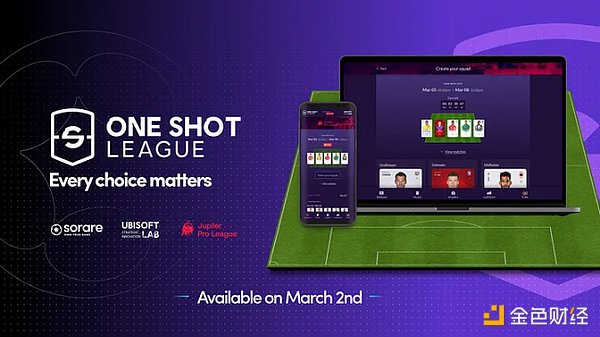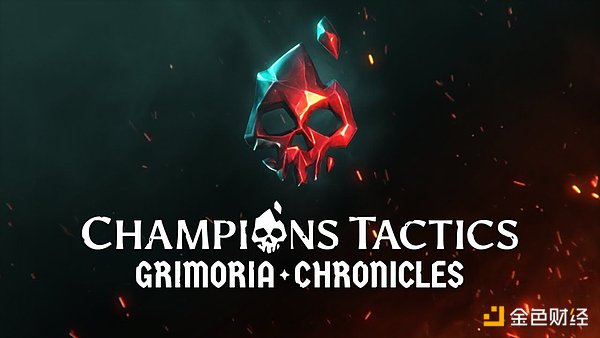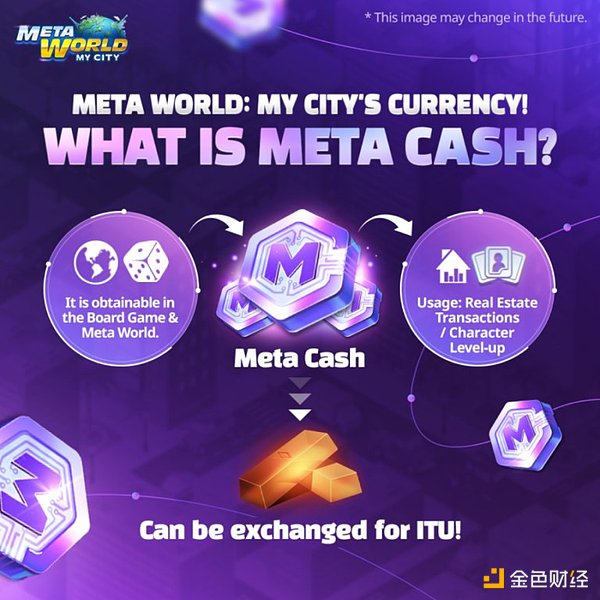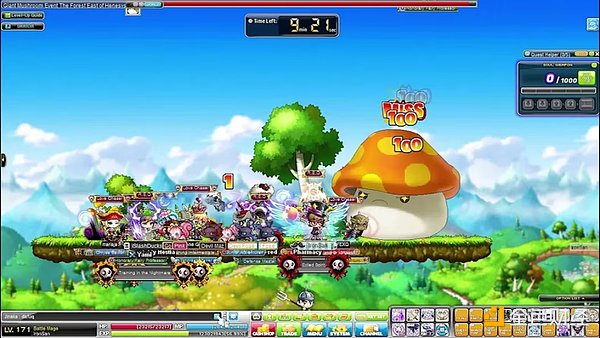Author: DevinBecker; Translation: Yvonne, MarsBit
In the past six months, Web3 game development has been cooling down, but one area worth studying is the position of AAA game publishers, who are optimistic about this technology at the end of 2021. When Axie Infinity exploded in the blockchain game industry (especially the play-to-earn model in the game), most major publishers took a wait-and-see attitude. When the market started to decline in early 2022, most companies stopped any new development in this field and left it mainly to smaller, more focused developers.
Now, some time has passed and most AAA publishers seem to have changed their direction. However, some are still pushing forward firmly. These pioneering publishers are determined to solve problems, and we expect that, despite the existing obstacles, they may have enough motivation to cautiously enter this field in the coming years. Although the sustained momentum mainly comes from the East, a large Western publisher is also continuing to invest.
Ubisoft is still on the edge
Ubisoft has always embraced new technologies and platforms. For example, it ventured into cloud gaming and made contributions to the short-lived Stadia platform; its subscription service Ubisoft+ also supports Stadia and Luna; it entered the virtual reality game field through games like “Star Trek Bridge Crew” and “Werewolves Within”; and it conducted experimental toy interactive games through “Starlink”. However, none of these adventures have sparked players’ anger like Ubisoft’s interest in blockchain games. Since 2018, the company has shown interest in blockchain technology and helped form the Blockchain Game Alliance.
- Dark fantasy Loot A complete analysis of blockchain games
- Multicoin Capital Co-founder Most of the discussion frameworks about RWA are incorrect
- I help Chinese people do Worldcoin KYC in Africa and earn 20,000 RMB per day.

Initially, Ubisoft explored blockchain technology through its “Strategic Innovation Lab”. The lab developed Hashcraft, a blockchain-based game similar to “Minecraft”. Although it was very interesting, Hashcraft never went beyond the prototype stage. Subsequently, the lab publicly announced its latest progress: launching a short-lived fantasy sports game called “One Shot League” based on interoperability cooperation, using Sorare’s football cards. However, these initiatives did not attract public attention until Ubisoft launched its ill-fated Ubisoft Quartz project.

Quartz is Ubisoft’s entry into the NFT field, and its product is called “Digits”. The company attempted to address the criticism of this technology by choosing the Tezos blockchain (for so-called environmental reasons) and using NFTs only for decoration to alleviate concerns about pay-to-win, and linked it to the popular game “Ghost Recon”.
The company’s marketing goal is collectors and fans who are excited about owning limited edition and series decorations that can be traded outside the game. However, at that time, the public’s view of NFTs was mostly negative, associated with high prices, Ponzi schemes, and not being welcomed by ordinary Ubisoft users. In addition, the latest “Ghost Recon” game, “Breakpoint,” also faced poor sales and strong opposition from players. This bad timing made NFTs even worse.
After Quartz, Ubisoft’s relationship with blockchain games deteriorated. There were reports that employees were dissatisfied with the promotion of this technology, leading to the cancellation of an unnamed web3 game called “Project Q.” Ubisoft even publicly stated that it would return its exploration in the blockchain field to “research mode” to get rid of its overly aggressive stance. Despite these setbacks, Ubisoft still invested in multiple web3 projects, including Cross the Ages, Nine Chronicles, Dogami, Rebel Bots, and Skyweaver.
The company also collaborated with Reddit and The Sandbox using its Rabbids IP for NFTs. Although these projects did not receive much return and some projects have recently been canceled and strategically reassessed, Ubisoft still released its own web3 game, Champions Tactics: Grimoria Chronicles, last month.

There is not much information about “Champions Tactics” at the moment, but it is known to be a “PC-based PvP tactical RPG experimental game.” According to the game website, players “assemble a mythical champion team, engage in exciting tactical battles with other players, and discover the legends of the dark and mysterious Grimoria world.”
The timing of this announcement is not coincidental – it is part of the Oasys blockchain special event during the Japanese blockchain cycle, centered around Japan and South Korea. The game is planned to be released on Oasys. Ubisoft is one of the 21 official validators of the Oasys blockchain, joining some major companies in Asia, including Square Enix, Com 2 us, NEOWIZ, Netmarble, Wemade, and NHN Corp. Oasys itself was created by well-known Japanese game developers Bandai Namco, Sega, Thirdverse, and Double Jump Tokyo. The event was also used as a launch for a new website showcasing all the games it offers and announcements from multiple publishers.
Sega is still on the “battlefield”
Sega has been ambivalent about developing blockchain games. In 2022, the company announced a collaboration with Double Jump Tokyo to develop a game based on its arcade IP “Sangokushi Taisen” on Oasys. The “Sangokushi Taisen” arcade series may be suitable for the Web3 model due to its unique method of creating and manipulating army units through the use of trading cards in real-time strategic scenarios.
Given the success of card-based strategy games such as “Clash Royale”, this move seems logical. In 2022, Japan also released “Arsenal Base,” a successful Gundam game based on physical trading cards, with gameplay similar to “Clash Royale”. Although the project was initially announced in 2022, Sega took the opportunity of Japan Blockchain Week to release the latest news, including a teaser video and more information about the game. It will be a card-based three-minute automated battle called “Battle of Three Kingdoms” and is planned to be released at the end of 2023.

Despite Sega’s release of the latest information and plans for this game, a recent conversation between Bloomberg and Sega’s Chief Operating Officer, Shuji Utsumi, gave the impression that the company is keeping its distance from web3 games. Utsumi criticized the games as boring, saying, “What’s the point if the game has no fun?” and expressed doubts about the prospects of blockchain technology in the industry. However, he also emphasized the potential of the field, saying, “For most people in the gaming industry, what blockchain advocates say may sound a bit extreme, but that’s how it starts. We must not underestimate it.” He added that while Sega is cautious about its biggest IP being used for blockchain games by third parties, it will continue to explore the field in collaboration with external partners.
In contrast to these remarks, Sega is collaborating with Line Next to introduce one of its “major licensing rights” into Line Next’s blockchain game platform, Game Dosi. Line Next is a Korean subsidiary of Line Corporation, the behind-the-scenes force behind the popular Japanese instant messaging service. Game Dosi was launched in mid-May and released several third-party games as well as a first-party trading card game called Project GD. Unlike Oasys, Game Dosi uses its own cosmos-based blockchain Finschia, which is designed for ease of use and has a simple wallet system, including social logins from Line and Google.
Although Sega has not disclosed the licensing rights or any details about the game, it is clear that the company is still interested in the opportunities provided by blockchain technology, despite some reservations. One of Sega’s successful IPs, “Virtua Fighter,” released a limited edition NFT on Oasys in March of this year, further confirming the company’s interest.
Square Enix keeps moving forward
Square Enix is another major publisher with a strong belief in blockchain games. The company’s president, Yosuke Matsuda, emphasized the company’s confidence in the potential of this technology and its commitment to exploring it in the annual New Year’s greetings for 2022 and 2023. In March of this year, Matsuda was replaced by Takashi Kiryu, whose statement indicated his interest in blockchain technology as well.
“In a rapidly changing business environment closely related to the entertainment industry, the proposed reforms aim to reshape the management team with the goal of adopting evolving technological innovations and maximizing the creative potential of the company group to provide more entertainment services to global customers,” wrote Takashi Kiryu.
This is not surprising, as Takashi Kiryu previously served as the general manager of Dentsu, a forward-looking research and development group with a strong interest in blockchain technology. The organization even released a web3 readiness tool in May. The key question is how Square Enix will cautiously navigate the bear market environment of the current blockchain gaming industry, especially regarding its flagship IP, “Final Fantasy.” Square Enix made initial explorations in this field by releasing “Final Fantasy VII” NFTs, which were first mentioned in 2022 and fully unveiled this May.
So far, the company’s most significant “adventure” has been the release of “Symbiogenesis,” a game that falls between an NFT art project and a mature game. The project focuses on art and storytelling, with gameplay similar to a hidden object puzzle game. Objects are completely hidden, with only clues guiding clicks. Despite its unconventional approach, it seems to have attracted a loyal following, with daily activity in its Discord community of 37,000 members and game updates and clues posted on its Twitter account with 42,000 followers.
South Korea as a Pillar of Web3 Gaming
While Japan’s confidence in blockchain gaming is evident, with even Japanese Prime Minister Fumio Kishida promoting NFTs, South Korea has been pioneering and refining blockchain gaming for years and has become a pillar of the Asian blockchain gaming industry. This progress is noteworthy because blockchain gaming has been illegal in South Korea since 2019, leading developers to create web3 gaming projects for the overseas market.
Wemade has been at the forefront of this field, integrating tokens and NFTs into its successful “Mir 4” and “Mir M” game series on Steam and mobile platforms. The company has established its own blockchain, WeMix. To date, it has hosted 62 tournaments of varying quality. However, Wemade’s approach has not been without controversy, as differences in token circulation numbers have led to the delisting of its tokens from exchanges.
Netmarble is another well-known South Korean developer that has embraced blockchain technology. Its released blockchain games include classic IPs like “The King of Fighters” as well as newer games like “A 3: Still Alive,” “Golden Bros,” “Ni no Kuni: Cross Worlds,” “Meta Football,” and “Meta World.” The company also plans to launch other games, including “GrandCross: MetaWorld,” in the fourth quarter of 2023.
Netmarble has been involved in developing games for major IP holders such as Marvel, and has ported CCP Games’ “EVE Online” to mobile platforms. However, in the near future, it seems unlikely that we will see the company develop blockchain games for major IP.

Com 2 uS, after establishing and renaming its blockchain XPLA (formerly C2X), continues to advance its web3 ambitions this year. It has already released multiple games on XPLA, such as the flagship game “Summoners War: Chronicles,” as well as “Ace Fishing Crew,” “Summoners War: Lost Centuria,” etc. Com 2 uS also announced at the Oasys conference that it will bring “Summoners War: Chronicles” to the platform. The company even discussed its experience in blockchain games at this year’s GDC.

Another major Korean game publisher, Nexon, shocked everyone by releasing a web3 new game based on Polygon in GDC. Although this is still an experiment for the company, the demo showcased how the technology enhances the main goals of “MapleStory” and its ecosystem. I recommend reading Naavik’s recent interview with CEO Owen Mahoney of Nexon.
Among all the existing IP exploring the potential of blockchain, MapleStory is the most important, with a rich history of 20 years. During this period, Nexon has been dealing with a series of secondary market issues and game design challenges, which are common for novice blockchain developers. These experiences provide valuable lessons that can help other companies in the future.
In its presentation, Nexon explicitly expressed awareness of the risks associated with the brand, reflecting the enthusiasm and concerns that many of these publishers experience when venturing into the Web3 finance and social sectors with well-known brands.
If “MapleStory” succeeds on the blockchain, it could serve as a catalyst for many developers who are hesitant to enter this field. However, in reality, the project may still need some time before it can be publicly released.

Quiet Participants
Although the most active voices supporting blockchain games come from Japan and Korea among major publishers, several other publishers choose to remain low-key and quietly work on their projects or observe from the sidelines. For example, Zynga hinted at its ambitions in this field after being acquired by Take-Two Interactive. Since then, the company has remained silent, except for recruiting senior game designers and executive producers in the blockchain game field. EA has also kept its activities highly confidential until recently announcing the integration of Nike NFTs into its sports games, which seems to be a cautious first step.
Activision Blizzard seems uninterested in this, but its parent company Microsoft has openly expressed interest in the technical aspects of the field and has invested in multiple projects, including blockchain games. It is worth noting that Microsoft has been very cautious in integrating blockchain technology into existing assets, as evidenced by Mojang’s ban on NFTs in “Minecraft”.
The Future
Just like the technological and commercial developments surrounding hype cycles, the next major shift of game developers towards blockchain technology may only be driven by a few successful games. The frenzy of 2021 was driven by the success of “Axie Infinity”, and although this adventure ultimately failed, the next game that sparks similar excitement could ignite new enthusiasm and attract more developers.
For example, Ubisoft has been working hard to correct mistakes in multiple areas, including canceling and delaying projects. Most of the previously mentioned technological bets did not achieve the expected results, making it difficult for Ubisoft to change the game landscape and achieve victory through “Champions Tactics”. In the long run, if a blockchain project fails to generate revenue, it will undoubtedly lead the company to reconsider the feasibility of the project.
Both Sega and Square Enix seem reluctant to take too many risks with this technology, indicating that more traditional publishers have a lower risk appetite for blockchain games. Sega wisely chose card-based games as its focus, as this is a game type that can sustainably exist in this field, as we have seen with “Sorare” and “Gods Unchained”. On the other hand, Square Enix is leaning towards the advantages of Symbiogenesis, although Square’s advantage in this area is not directly achieved through blockchain. It is unlikely that Square’s new president will talk too much about this technology in the annual letter of 2024 unless the publisher sees significant progress from current projects.
From the perspective of the Japanese Blockchain Week, although the market is in a bearish state, there are still quite a few people in the region who are enthusiastic about exploring what blockchain can do for games. South Korea has also persisted in developing games around a technology that cannot even be used locally. Both countries have shown a certain level of resilience and determination in attempting to use Web3 and blockchain game technology to see if it has viable commercial potential. However, market realities also need to be taken into consideration, as problems at the underlying level could quickly make anxious company executives take a wait-and-see attitude again.
The most likely outcome is that some of the publishers we have detailed here will shift their attention to other areas without achieving substantial success in the early stages. We may not see blockchain-supported “Final Fantasy” or “Sonic the Hedgehog” games anytime soon. It is also important to consider that developing a AAA-level game takes years, making high-quality blockchain games more like side projects, as these publishers still need to invest most of their resources into their main projects.
On the contrary, Sega relies on third parties or Square Enix to develop smaller-scale experimental new IP strategies, which allows games to make progress without taking risks. We also don’t want to see Western publishers aggressively entering the blockchain gaming market in the next one or two years unless they achieve some success.
Like what you're reading? Subscribe to our top stories.
We will continue to update Gambling Chain; if you have any questions or suggestions, please contact us!